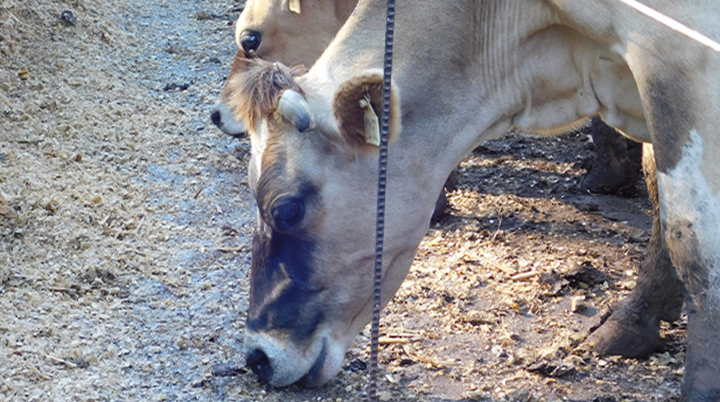
INNOVATIVE FEEDING OF MAIZE SILAGE
Faced with these problems on his expanding dairy operation on the farm Mount May in the Kokstad area of KZN James Raw came up with a solution that suited his situation. He grazes the silage in the long buns that he makes. The whole length of the bun is opened and an electrified wire is run approximately 0,5 of a meter off the face of silage. He makes the buns about 150 meters long and about 1,7 meters high. He allows a meter of width to 3 cows. The height is important in that if it is too high you get the silage collapsing on to the ‘hot wire’ that runs along the length of the bun.
For the milking herds, James has staff members on duty all the time breaking down the face of the bun. When the cows can no longer reach the silage, the ‘hot wire’ is moved closer to the face. Intakes can be controlled and calculated by measuring the required volume of silage that he wants the cows to eat. With the Dry Cows heifers where intake is not so critical, a staff member will go several times a day to ensure silage is available to the animals.
Wastage of silage in this system is minimal if the staff member on duty is diligent. As this is still a growing operation and new pastures required, James establishes Kikuyu pastures on the heavily dunged area where the bun was each year. The following year the bun will be made next to the previous one.
This system suits the management style on the farm and has meant that James has not had the capital expense of buying all the equipment necessary to feed silage to the growing number of cows he is milking. This, in turn, has freed up his capital for other important infrastructure projects.
For the best nutritional optimization of the dairy ration to have had a well-balanced ration, please feel welcome to contact De Heus
